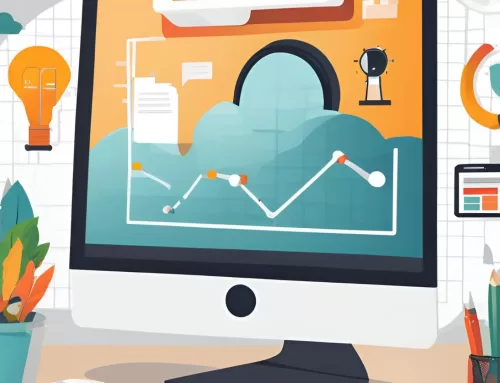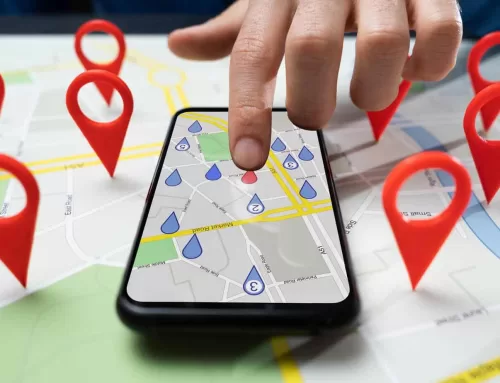How to make your business more sustainable
Sustainability and climate change can be an inexplicably controversial topic. Some see it as political. Some see it as a natural occurrence that humans have no impact on. Other see it as an irrefutable fact that needs to be addressed if we are survive into the next century.
Whatever side of the fence you sit on, it is something that you should start to think about for your business.
A survey conducted at the end of 2021 concluded that 82% of consumers say that sustainability is more top of mind now than it was before COVID-19 and 78% of consumers said that big businesses have a role to play in helping to fight climate change.
What this means is that there is a growing expectation that business lead the way in tackling climate change. It’s no longer acceptable to adopt a wait and see approach. Sustainability should no longer be considered a trade-off, but instead a competitive advantage, and a key component of enduring business performance.
What does sustainability in business really mean?
‘Sustainability’ refers to environmental, social, and governance (ESG) dimensions of a company’s operations and performance. In simple terms its doing business without negatively impacting the environment, community, or society as a whole.
According to the Harvard Business School, sustainability in business generally addresses two main categories: 1. The effect business has on the environment 2. The effect business has on society.
With this in mind, here are my top tips on how to make your business more sustainable.
1. Start as you mean to go on
If you are a start-up and are just commencing your business journey, it is really important to implement your sustainability policy from the start and embed it into everything you do. Change is far harder to implement further down the track when routines are already set. Implementing sustainable policies from the beginning will save you money, time and effort.
So how do you start your sustainability journey? Read on to find out.
2. Be innovative
In the past, many businesses have adopted a wait and see approach to sustainability. Their thinking was I’ll hop on board when everyone else does (said no successful business person ever!). This concept is a bad business approach. No-one except maybe Steven Bradbury, has ever really benefited by coming last and that certainly holds true in business.
What is Sustainable Innovation?
Sustainable innovation involves making intentional changes to a company’s products, services, or processes to generate long-term social and environmental benefits while creating economic profits for the firm.
How can you achieve sustainable innovation?
By developing novel products and services.
Keep sustainability in mind when developing new products. Use waste products or upcycle old products by re-inventing their usefulness.
- A great example is Bio-bean, a British start-up and certified B Corp. It developed an eco-friendly biofuel made from coffee waste to help power London’s double-decker buses. Bio-bean also upcycles spent coffee grounds into eco-friendly products such as coffee logs and coffee pellets. These are eco-friendly alternatives to coal briquettes and wood logs. Bio-bean is using a material previously considered waste, contributing to a circular economy while generating approximately $10 million (USD) in annual revenue in 2020.
Through changing operational processes.
Business can also innovate sustainably without inventing a new products. Sustainable process changes can occur in many areas, e.g. design, production, marketing, and even HR.
- look at ways to implement an end-of-life recycling process for your existing products.
- Invest in more sustainable packaging.
- Design your products to last longer.
- Ensure onboarding of new staff incorporates education on your company’s commitment to sustainable practices.
There are more ideas on this in tip #3
Embrace the hybrid office.
Having your team work from home, for at least part of the working week, is good business sense. Providing you have the correct systems in place to enable this to work effectively, you will;
- save money on operational costs like heating, cooling and other office running costs,
- allow for a smaller office space thus saving on rent,
- reduce emissions from staff travelling to and from work every day,
- help your team get a work life balance, and
- allow people with disabilities or young children to participate in work that is normally unavailable to them. This will open up a world of opportunity for them and gives you access to expertise that is not available in a traditional office setting. A win-win.
Embed it in your culture.
Sustainable innovations are likely to be more successful when they are deeply embedded in the firm’s culture. When sustainability is not part of the business culture, the pursuit of short-term profits will kill sustainability-oriented creative ideas without giving them sufficient time to mature. For a business to be truly sustainable, it must have the commitment of all its workforce.
You can achieve this through;
- making sustainability part of your interview process. Ask your applicants their opinion on sustainability, sustainable innovation and what they can contribute to a more sustainable workplace,
- motivating staff to think sustainably by incentivising them with rewards and acknowledgement,
- set up training for all staff in sustainable work practices,
- ensuring your sustainable practices are embedded into your new staff onboarding process, and
- giving your team input. Encourage your team to come up with new ideas on how your business can be more sustainable.
Ensure it’s a part of your business strategy.
When writing your business plan, ensure sustainability is included as an actionable and measurable objective and ensure it is a consideration in all your business objectives.
3. Don’t let perfect get in the way of better.
As a small business, it’s hard to find the time for much outside of your normal business practices. It’s very easy to think that tackling climate change and sustainability in your workplace is an organisation wide problem that will involve a lot of change and a lot of planning. The perfect solution will take time, effort and cost. So off it goes into the too-hard basket never to be seen or heard from again.
It really doesn’t have to be like this. Big journeys begin with small steps and even the smallest actions are a step in the right direction. So don’t be afraid to start small.
What small steps can you take?
The following steps suggested by the Department of Planning and Environment are a great start and will also save you money:
- Reduce meeting costs: make a phone call instead of holding a meeting, send an email rather than posting, conduct virtual meetings to save the cost of making business trips.
- Minimise using materials: archive computer files rather than print files, advertise on your website rather than in brochures, email your promotional material rather than posting it.
- Reduce waste: re-use old envelopes, have staff use their own mugs, get printer cartridges refilled not replaced and buy recycled stationery supplies.
- Recycle it: recycle everything you can’t reuse – check with the council what they will recycle. Set up recycling bins in locations staff will use them. A good way to involve staff is to hold a regular office book, clothing or DVD swap day.
- Turn it off: switch off lights, computers, printers and appliances at the power point when not in use – they will last longer and your power bills will be considerably reduced.
- Outsource it: reduce your server needs and cut power costs by using cloud computing services (web-based data storage) and use virtual office services or outside contractors rather than expand office space.
- Reduce it: turn down the air conditioner – lowering the temperature just one degree on a hot day can increase your energy costs by 10 per cent. Reduce energy consumption further by: using cut-out switches to cut out standby power usage, installing automatic lighting sensors, having power supplied by green energy providers, choosing hybrid cars for your fleet vehicles. In the office kitchen, reduce water and power consumption by running office dishwashers when full, fixing leaky taps and reducing the hot-water temperature setting.
- Buy green: get some green credentials by setting up a sustainable supply policy and guidelines, and send a checklist to your suppliers asking about their sustainable products and services. Ask printers for recycled paper, replace defunct equipment with high-energy efficiency models with a long shelf life.
4. Diversity helps Sustainability
Having a more diverse workplace means that your ideas and solutions can also be more diverse. People from different backgrounds and different life experience will offer different solutions. For example, a man in his 50’s that’s worked in your sales department for 25 years will offer a different perspective than a new female recruit, straight out of university and about to start in IT. Both opinions are valid and should be considered equally. Also, employees with disabilities will ensure your accessibility practices are on point and will help you reach a wider audience for your products or services.
5. Your solutions should encompass your whole business
Getting ideas and feedback from all facets of your organisation will lead to a more comprehensive approach. Every department can adopt sustainable practices. Look at every aspect of your business from product design to sales funnels and ensure environmental and social factors are considered in everything you do.
6. Encourage your customers to think sustainably
There are certainly many different levels of commitment when it comes to sustainability. On one level you have the people passionate and truly committed to the cause. Right down the other end of the spectrum you have the non-believers. Most people generally fall into the middle. They are aware of climate change and want to do things that will make a difference but do not want to be too inconvenienced by whatever it is they want to change. People don’t want to trade quality, convenience, or affordability for sustainability. Customers expect to be offered more eco-friendly choices, but not at the expense of other product benefits.
So it’s important to show customers how sustainability helps them as well as the environment. Show them how they can solve everyday problems with sustainability. Focus on the solutions your brand is building and how the future could look. Be sure to emphasize the meaningful changes your brand has made and take action in authentic, transparent, and measurable ways.
7. Tell positive sustainability stories
Whatever you do as a business to make yourself more sustainable, ensure you communicate this to your customers and your target audience. It’s a fantastic idea to implement these actions. It makes you feel good about yourself and your business, and it also benefits the environment. A win win. However, a golden opportunity will be lost if you are not letting people know what you are doing. Use your communication channels to tell your story. You have an amazing opportunity to be a leader for change. Embrace it.
- Weave sustainability into the existing value proposition of your product or service, rather than positioning it as a bonus feature.
- Try listing sustainability benefits alongside other product benefits so that they become a cohesive part of the brand experience.
- Educate your customers on how to dispose of your product or packaging.
- Show them all that you are doing to make your whole business more sustainable.
They want to learn about what you’re doing to improve sustainability now. That way, they can see more clearly how choosing your brand will make a difference.
8. Start with what you are good at.
Play to your strengths. If you are known for your packaging, use that to highlight your innovations. If your staff are your strongest weapon – ensure they are equally as passionate as you are about the changes you are making. You have a large social media following – share your sustainability journey there.
9. Be courageous
Sometimes we are hesitant to take a stand in our business because we are afraid that our customers think differently. We really do not want to hurt or lose a business relationship based on an issue we decided to address. I get it! I am guilty of it myself. However, being ahead of the curve and standing on the right side of history will do far more for your business than reticence ever will. If you do lose a customer because they disagree with your view, you will gain far more for being brave and taking a stand.
As an environmentalist I will always urge people to look at their behaviour and make changes to help our planet. As a marketer I urge businesses to do the same thing. Acting sustainably and responsibly will not only save you money, but it will also improve your reputation, open up you customer base and make you and your team feel great. What more can you ask for?
In the end it comes down to practicalities. Based on current trends, there is really only one way forward. As a wise and wonderful woman once, so wisely said…
“Standing still is the fastest way of moving backwards in a rapidly changing world.” Lauren Bacall by Kirsten Goode
So hurry up! Climb aboard the bandwagon. Before you get left behind.
My sources
https://www.thinkwithgoogle.com/consumer-insights/consumer-trends/consumer-sustainability-trends/
https://www.environment.nsw.gov.au/questions/making-small-business-more-sustainable
https://www.nbs.net/articles/what-is-sustainable-innovation-and-how-to-make-innovation-sustainable
https://www2.deloitte.com/au/en/pages/strategy-operations/articles/embedding-sustainability-strategy-business-operations.html
https://online.hbs.edu/blog/post/what-is-sustainability-in-business







[…] Home/General News and Views/How To Build A Sustainable Business Previous Next […]